No products in the cart.
Wusaki Nakata BS2 Santoku Knife 16.5cm Walnut Handle
$154.90 Original price was: $154.90.$99.99Current price is: $99.99.
Prepare your favourite recipes with this Wusaki Nakata BS2 santoku knife!
Ultra sharp blade made of Japanese Aogami Blue Steel n°2
Carbon steel core surrounded by 2 stainless steel layers – San Mai construction
It requires careful maintenance due to its high carbon content
Blade forged by hand with a Nashiji finish on its surface
Handle made of walnut wood with pakkawood bolster
Made in Niigata, Japan
SKU: BXLJA 77576 Categories: Japanese knives, Santoku knives
- Quality at its Finest
- Efficiency meets excellence in customer care.
- Protecting Your Payment Information
- Nature-friendly materials, 100%.

More info
The Japanese knife range from the Wusaki Nakata BS2 series is dedicated for all the fans of high-quality Japanese cutlery. It proposes the most used types of Japanese kitchen knives sot that you can take care of all your different food cuts. From their remarkable cutting performance to their authentic design, these knives will be the stars of your kitchen.
Every single procedure required for the manufacturing of these knives takes place in Japan. From the manual forging of the blade to the assembly of its different parts, each Wusaki Nakata BS2 knife is 100% a Japanese creation. They are forged in the Japanese city of Sanjo located in the province of Niigata using manufacturing methods adapted from the ancient techniques used by the Japanese blacksmiths that used to create the katana swords.
The Japanese santoku knife shown in this page is the perfec tool for working with fruits and vegetables. The versatility of this type of knife also makes it a good option for working with boneless meats. With a blade that is only 16.5cm long, it is quite handy and easy to manipulate.
San Mai – Nashiji: a design like no other
The blade of this santoku knife is made of 3 different steel layers, which is a Japanese technique known as San Mai (which means “3 layers):
– Made of Japanese Blue Steel n°2 (also known as “Aogami” in Japanese), the core of the blade has 1.2% of carbon content, which is quite high if we take into consideration that the average for most Europeand and Japanese blades is between 0.5 and 1% of carbon content. The name of the steel comes from the paper used by Hitachi factories to wrap their pieces of steel, which is blue.
– Around the core, there is a layer of stainless steel on each side to protect the the blade from oxydation and from being too brittle. This softer layer of steel has a raw Nashiji finish, which is what gives the blade’s surface its dark appearance.
All the different manucturing techniques put into practice for the creation of this blade give the knife a truly unique look. The rustic aspect of the handle matches perfectly with the hammered surface of the blade.
Outstanding cutting edge
The high carbon content present in the steel score enables the blade to be quite rigid as it reaches a hardness of 62-63 HRC in the Rockwell scale. Such level of hardness is among the highest levels that are found in the cutlery industry, and it allows the blade to have a thin razor sharp edge.
To minimize the effort every time that you cut any of your food ingredients, the blade is manually sharpened on both sides at a very acute angle. Hence, the blade penetrates into your foods with remarkable ease.
Easy and fast sharpening
When a knife has a blade that is this hard, it is usually very difficult to hone it. That is indeed the case for most of stainless steel blades highly enriched with carbon, which are hard to hone and require a lot of patience and time to obtain the desired results.
However, the Japanese carbon steel such as the Aogami n°2 steel used in this knife is highly appreciated for being easy to sharpen despite of its high hardness. Therefore, the blade of this knife can be easily sharpened with a whetstone, and it requires only a small amount of time to obtain a razor sharp edge.
Easier to maintain than most Japanese knives
Thanks the outer layers of stainless steel, most of the blade’s surface is protected against oxydation. The only part of the blade on which the carbon steel remains uncovered is along the edge, which is why this part is more prone to suffer from oxydation.
Nonetheless, you should know that is entirely normal if the surface close to the edge changes its coulour with the pass of the days. It will most likely turn into a shade of blue, but this does not represent any type of danger for your foods.
Comfortable handle
The handle is made of walnut wood, which has been sanded and polished to give it a soft-touch surface. It has great resistance to humidity and heat. In addition, its round shape ensures a comfortable and firm grip every time that you use the knife.
Its bolster is made of pakkawood and has a traditional shape. Thanks to its black colour, the bolster complements well the look of the wooden handle.
Taking care of your knife
We encourage you to wash it by hand immediately after every usage using mild soap and a non-abrasive sponge. Dry it immediately with a soft cloth to prevent the appearance of spots on its surface. Putting it in the dishwasher, letting it sink in water, or letting dry by itself are all things that will not do good to your knife (and the same applies for any knife, even the stainless steel ones)
Discover the rest of the Wusaki Nakata BS2 series here on our website!
| Blade | 16.5 cm |
|---|---|
| Material | San Mai steel |
| Handle | Walnut wood |
| Dishwasher safe | No |
| Made in | Japan |
Be the first to review “Wusaki Nakata BS2 Santoku Knife 16.5cm Walnut Handle” Cancel reply
Related products
Sale!
Damascus knives
KAI Shun Premier Tim Mälzer Santoku Knife Damascus Blade 14cm
Sale!
Gyuto knives
Sale!
Sale!
Deba knives
Sale!
Sale!
Damascus knives
Kai Shun Classic Japanese Chef Knife 25cm – Damascus Steel Blade
Sale!
Japanese knives
Sale!
Japanese knives

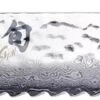



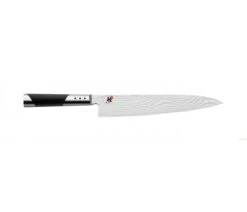
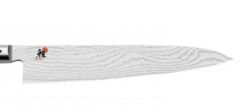
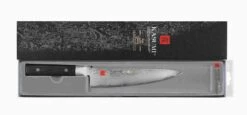
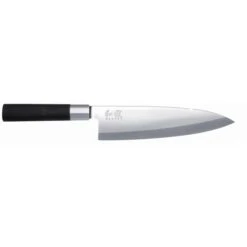
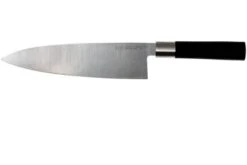
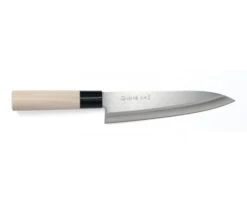
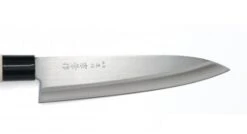
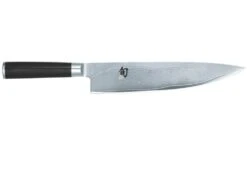
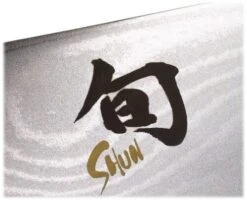
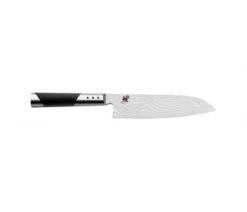
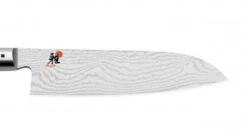
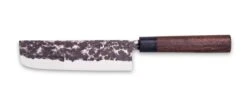
Reviews
There are no reviews yet.